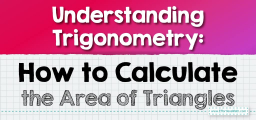How to Solve Non-Right Triangles Problems
Non-right triangles are a fundamental concept in geometry, with far-reaching applications. In this comprehensive guide, we delve into the world of non-right triangles, offering detailed insights that will enhance your understanding and aid in your problem-solving endeavors.

What Are Non-Right Triangles?
As the name suggests, non-right triangles are those that do not feature a \(90\)-degree angle. These include acute and obtuse triangles. Acute triangles have all angles less than \(90\) degrees, while obtuse triangles feature one angle exceeding \(90\) degrees.
Properties of Non-Right Triangles
Non-right triangles hold several intriguing properties. Their sides and angles interrelate uniquely, creating patterns that mathematicians have leveraged to develop essential geometric principles.
The Law of Sines
The law of sines is a crucial tool for solving non-right triangles. It states that the ratio of a side to the sine of its opposite angle is consistent for all sides and angles in a given triangle. Formally expressed, it is \(\frac{a}{sin(A)}=\frac{b}{sin(B)}=\frac{c}{sin(C)}\), where \(a, b\), and \(c\) are the sides, and \(A, B\), and \(C\) are the opposite angles.
The Law of Cosines
Another indispensable principle is the law of cosines, a generalization of the Pythagorean theorem that applies to all types of triangles. For non-right triangles, it is defined as \(c^2= a^2+ b^2-2abcos(C)\), with \(c\) being the side opposite angle \(C\).
Solving Non-Right Triangles Using the Laws of Sines and Cosines
Determining unknown sides or angles in non-right triangles typically involves the law of sines or the law of cosines. Here’s how:
- With Two Sides and an Included Angle (SAS): Use the law of cosines to find the third side. Then, use the law of sines to find one of the unknown angles. The final angle can be found by subtracting the known angles from \(180°\).
- With Two Sides and a Non-Included Angle (SSA): Apply the law of sines to find one of the other angles. Depending on the given information, there might be one or two solutions, leading to an ambiguous case.
- With Three Sides (SSS): The law of cosines is your go-to tool. Use it to find one angle, then the law of sines or cosines to find the second angle. The third angle is found above.
The Area of Non-Right Triangles
The area of non-right triangles can be computed without height, unlike right triangles. The formula is \(\frac{1}{2}absin(C)\), where \(a\) and \(b\) are sides, and \(C\) is the included angle.
Real-world Applications of Non-Right Triangles
Non-right triangles have numerous practical applications. From construction, astronomy, and physics, to computer graphics, these geometric figures are incredibly versatile.
Conclusion
Non-right triangles, their properties, and associated laws are foundational knowledge in geometry. By understanding and mastering these, one can effectively solve complex geometric problems and apply these principles in various real-world scenarios.
Related to This Article
More math articles
- 6th Grade NYSE Math Worksheets: FREE & Printable
- 5th Grade Ohio’s State Tests Math Worksheets: FREE & Printable
- Top 5 Graphing Calculators for Physics
- The Ultimate DAT Quantitative Reasoning Course (+FREE Worksheets & Tests)
- Top 10 Tips to Create a TABE Math Study Plan
- Number Properties Puzzle – Challenge 10
- The Ultimate 6th Grade RISE Math Course (+FREE Worksheets)
- Top 10 8th Grade Georgia Milestones Assessment System Math Practice Questions
- How to Graph Inverse of the Cosine Function?
- Using Models to Represent Decimal Number Place Value


















What people say about "How to Solve Non-Right Triangles Problems - Effortless Math: We Help Students Learn to LOVE Mathematics"?
No one replied yet.